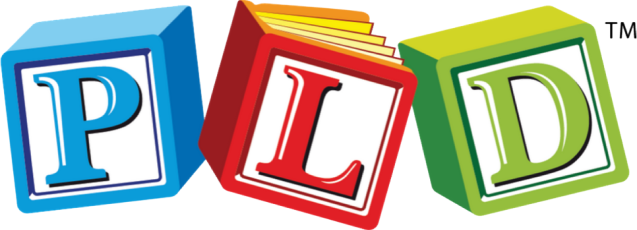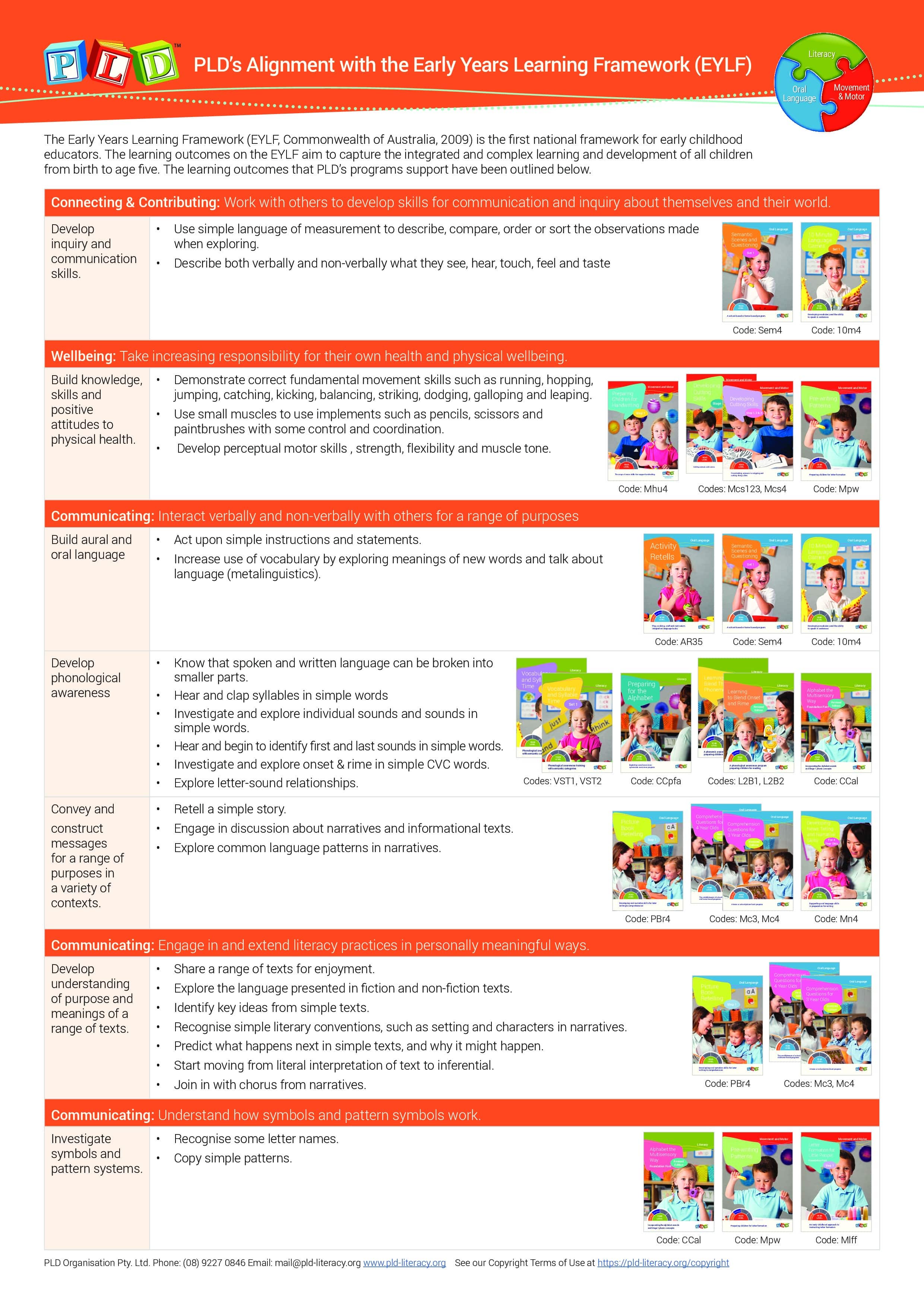-

Maximising literacy development within the Junior Primary
At PLD we advocate for a strong junior primary process, in which the connections between classrooms and year levels is well organised. Most students require
-

Private: The Pathway of Pre-Literacy into Early Literacy
Schools will have literacy results maximized over the long-term when they systematically plan how students progress from pre-literacy (or emergent literacy skills) into their early
-

Getting Ready for Writing (Pre-writing patterns) Factsheet
A downloadable factsheet which identifies the six basic (Pre-writing) patterns that form the basis of all alphabet letters.Throughout the early years, children are encouraged to participate in a range of fine motor activities that develop: their manipulative skills a dominant hand the
-

Speech Sound Development – Ages 3 to 8
The milestone poster/sheet details the age related milestones for speech sound development in children aged 3 to 8 years.Many parents, early childhood workers and teachers will wonder if a child speech is normal. Most children’s speech becomes clearer gradually as they hear and
Alphabet Letter Sounds
Code: Bal
Year Level: School Licenses, Early Years, Foundation, Year 1 & 2
$71.50 (inc. $6.50 GST)
Repeated targeted games and tasks to consolidate alphabet sound knowledge
Children require knowledge of the alphabet in order to learn to read, spell and write. Designed by Speech Pathologists and Occupational Therapists, Alphabet sound knowledge for 4 to 6 Year Olds is the key to early literacy learning, rather than letter naming.
For example:
- In order to read the word ‘dog’ a child must recognise each letter symbol and convert each symbol into the correct sound ‘d’, ‘oh’, ‘g’ and then the child must blend the sounds together (phonemic blending ability).
- In order to spell the basic word ‘cup’ a child must first ‘sound-out’ (or phonemically segment) ‘c’, ‘u’, ‘p’ and then the child must recall and apply in the correct order the alphabet symbols.
As these examples illustrate, alphabetic letter naming does not help a child to blend nor segment the sounds in words. It is their knowledge of the alphabet sounds which allows them to read and spell the words. This resource, therefore, focuses on alphabet sounds for early literacy learners. The recommended order of presentation is:
- Group 1: s, p, n, i, a, t
- Group 2: m, r, h, e, d, c
- Group 3: f, l, g, o, u b
- Group 4: w, j, v, k, z, y, q, x
The resource provides multiple opportunities to rehearse the recognition, application and letter formation of the alphabet sounds.
Features:
- Instruction manual (156 pages)
- Games and worksheets
- Alphabet sound knowledge checks
- Screening formats to track student performance on letter-sound recognition and letter formation.
Alphabet Letter Sounds - eBook
Code: Bale
Year Level: School Licenses, Early Years, Foundation, Year 1 & 2
$57.00 (inc. $5.18 GST)
Repeated targeted games and tasks to consolidate alphabet sound knowledge
Children require knowledge of the alphabet in order to learn to read, spell and write. Designed by Speech Pathologists and Occupational Therapists, Alphabet sound knowledge for 4 to 6 Year Olds is the key to early literacy learning, rather than letter naming.
For example:
- In order to read the word ‘dog’ a child must recognise each letter symbol and convert each symbol into the correct sound ‘d’, ‘oh’, ‘g’ and then the child must blend the sounds together (phonemic blending ability).
- In order to spell the basic word ‘cup’ a child must first ‘sound-out’ (or phonemically segment) ‘c’, ‘u’, ‘p’ and then the child must recall and apply in the correct order the alphabet symbols.
As these examples illustrate, alphabetic letter naming does not help a child to blend nor segment the sounds in words. It is their knowledge of the alphabet sounds which allows them to read and spell the words. This resource, therefore, focuses on alphabet sounds for early literacy learners. The recommended order of presentation is:
- Group 1: s, p, n, i, a, t
- Group 2: m, r, h, e, d, c
- Group 3: f, l, g, o, u b
- Group 4: w, j, v, k, z, y, q, x
The resource provides multiple opportunities to rehearse the recognition, application and letter formation of the alphabet sounds.
Features:
- Instruction manual (156 pages)
- Games and worksheets
- Alphabet sound knowledge checks
- Screening formats to track student performance on letter-sound recognition and letter formation.
Alphabet Letter Sounds – School Licence
Code: bales (School Licence)
Year Level: School Licenses, Early Years, Foundation, Year 1 & 2
$214.50 / year (inc. $19.50 GST)
Add to cart
This is a PLD School Licence resource By purchasing this licence, this program will be accessible as a digital flipbook that will be stored in your secure account on the PLD website. The program will be accessible as a digital flipbook that teachers can access on any device for as long as the licence is active. A School Licence is valid for 12 months from the date of purchase and can be shared with all staff employed at the school. We highly recommend that either the Principal, Deputy Principal or a member of the admin team purchase the School Licence in order to manage the account and its users. For more information, visit our School Licence FAQ.
Repeated targeted games and tasks to consolidate alphabet sound knowledge
Children require knowledge of the alphabet in order to learn to read, spell and write. Designed by Speech Pathologists and Occupational Therapists, Alphabet sound knowledge for 4 to 6 Year Olds is the key to early literacy learning, rather than letter naming.
For example:
- In order to read the word ‘dog’ a child must recognise each letter symbol and convert each symbol into the correct sound ‘d’, ‘oh’, ‘g’ and then the child must blend the sounds together (phonemic blending ability).
- In order to spell the basic word ‘cup’ a child must first ‘sound-out’ (or phonemically segment) ‘c’, ‘u’, ‘p’ and then the child must recall and apply in the correct order the alphabet symbols.
As these examples illustrate, alphabetic letter naming does not help a child to blend nor segment the sounds in words. It is their knowledge of the alphabet sounds which allows them to read and spell the words. This resource, therefore, focuses on alphabet sounds for early literacy learners. The recommended order of presentation is:
- Group 1: s, p, n, i, a, t
- Group 2: m, r, h, e, d, c
- Group 3: f, l, g, o, u b
- Group 4: w, j, v, k, z, y, q, x
The resource provides multiple opportunities to rehearse the recognition, application and letter formation of the alphabet sounds.
Features:
- Instruction manual (156 pages)
- Games and worksheets
- Alphabet sound knowledge checks
- Screening formats to track student performance on letter-sound recognition and letter formation.
Books: PLD’s books may only be used by the Authorised Purchaser, and the Authorised Purchaser’s students, and only in conjunction with classes taken by the Authorised Purchaser. PLD’s books may be photocopied up to 10% per year for use only by the Authorised Purchaser. The Authorised Purchaser is defined as the original purchaser of the PLD materials.
eBooks: PLD’s eBooks may only be used by the Authorised Purchaser, and the Authorised Purchaser’s students, and only in conjunction with classes taken by the Authorised Purchaser. The Authorised Purchaser is defined as the original purchaser of the PLD eBook. Under the ‘Statutory Educational License’ the authorised purchaser can:
- View the eBook as a whole or in part
- Copy the eBook to their personal drive or locally on their device
- Display the eBook on your Interactive Whiteboard, projector or smart TV, for the purpose of teaching the students in their own classroom
- Photocopy or print up to 10% of the eBook per year, for use with the students in their classroom(s).
For copyright purposes, every page of the PLD eBooks will be stamped with the name & email address provided by the purchaser at the time of order. PLD ebooks belong solely to the purchaser and may not be shared with colleagues, parents or anyone else. PLD eBooks must not be uploaded to school servers, intranets or online platforms. Schools wishing to licence PLD eBooks can contact us HERE.
School Licences: A School Licence is a multi-user subscription to a PLD resource, such as a book or program, in a digital and printable format that is accessible via the ‘My Subscription’ section of the PLD website. A School Licence is valid for 12 months from the date of purchase and can be used by an unlimited number of teachers within a school. When bought under a School Licence:
- Resources are accessible in digital, flipbook format, which teachers can access from anywhere, at any time, on any device via the PLD website.
- The resources can be used by any amount of teachers in that school.
- Multiple teachers can access the resources simultaneously.
- The resource is available to print, subject to the standard 10% per year limitation as per Australian Copyright law.
- Updated versions of resources will be automatically accessible to users with a current licence for free, ensuring all users have access to the latest versions of resources.
- Resources are stored centrally and accessed via a secure login account on the PLD website. Thus, all currently subscription resources are accessible in the one convenient place, making resources extremely easy to find. Moreso, the school licence offering eradicates the frustration of lost or misplaced resources and programs which happens often with hardback books.
Additional information can be accessed via the following links:
Books: https://support.pld-literacy.org/en-au/article/plds-printed-electronic-materials-how-can-they-be-used-can-i-share-them-with-a-friendcolleague-9lk4y/
eBooks: https://support.pld-literacy.org/en-au/article/the-pld-ebooks-how-can-they-be-used-what-is-the-copyright-policy-ptfya8/
PLD’s Copyright Policy: https://support.pld-literacy.org/en-au/article/copyright-and-terms-of-use-of-pld-literacy-15tkcer/
ISBN :
9781925057829
ISBN :
9781925057829











